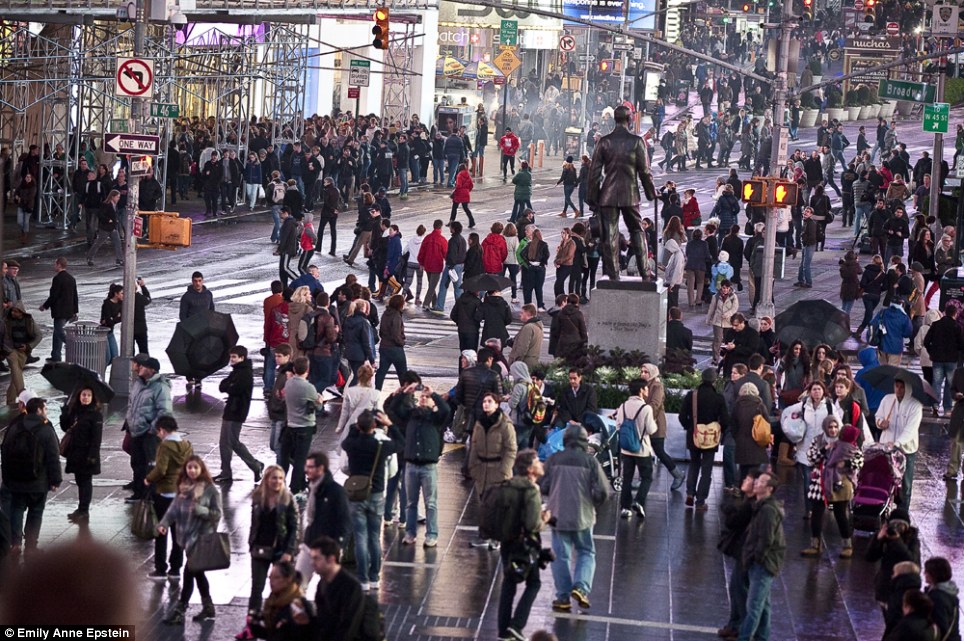|
The Proles of New York
Yesterday, in a post linking a Daily Mail article with many photos of New York City after the storm, I remarked in passing:
On the cultural side of the phenomenon, all the people seen in these photographs, including large crowds in midtown Manhattan (which was not affected by the storm), are dressed like proles. This is the way the West now looks.Laura Wood had the same reaction, and has expanded it into a post entitled, “The Lumpenproletariat of New York”:
 THESE Daily Mail photos of New York City after the hurricane remind me of just how ugly the streets of Manhattan are, with almost everyone dressed in drab, uninteresting clothes that rival the uniforms of Maoist China for their homogeneity and lifelessness. America is one of the most aesthetically impoverished nations in history. I wonder how many thousands of people are on medication because they are depressed by their own clothes and their ugly, hostile environments, surrounded as they are by impersonal denim, sneakers with tire treads, plastic-covered down jackets, billboards with oppressive smiles, and the austere, chilling cliffs of modern skyscrapers. This is the environment of a people that idolizes equality and sameness. The only way to survive amid such poverty is to possess an interior castle, a place of tapestries and mahogany where denim and sweat jackets are nowhere to be seen.Naturally, Laura gets a complaint from a conservative Christian reader who says that Jesus wouldn’t care about how people dress. I would add while having a refuge in one’s own private or interior castle is good and necessary, it not the only recourse against the universal grunge culture. One could dress in public—even when walking in the midst of, and as a silent silent reproof of, the be-hoodied, be-jeaned, marxified masses—like my friend Dean Ericson, shown here in October 2011 on Randall’s/Ward’s Island before the Hell Gate Bridge (a railroad bridge connecting Manhattan and points north):
Comments
Re the photo of Dean Ericson, I think that is exactly how I would dress if my work were not in between blue and white collar. Timeless. Enough people dressed with such care might embarrass the surrounding schlubs into self-improvement.Alexis Zarkov writes:
One of the many reasons I left New York City decades ago was the pervasive ugliness of mind, body, spirit, and environment. Some places look better today. Central Park has been mostly restored, and seems cleaner and safer, although nothing like it did in the 19th century. Originally the Park had special police to enforce civil behavior. By the 1970s, it was too dangerous for a white person to enter anywhere north of 96th Street, even during daylight. Bethesda Fountain had become almost a ruin. In the 1930s, even the unemployed dressed better than the average white middle-class prole you find in New York today.Beth M. writes: I wonder if people of similar incomes tend to have nicer wardrobes in areas where there is little racial diversity. Having expensive clothes, shoes, handbags, cell phones, or jewelry is a huge mistake in most American cities at this point.November 2 Aditya B. writes:
You think New York is ugly, but it ain’t got nuttin’ on El Lay! [LA replies: I said, “This is the way the West now looks.”] Posted by Lawrence Auster at November 01, 2012 04:23 PM | Send Email entry |